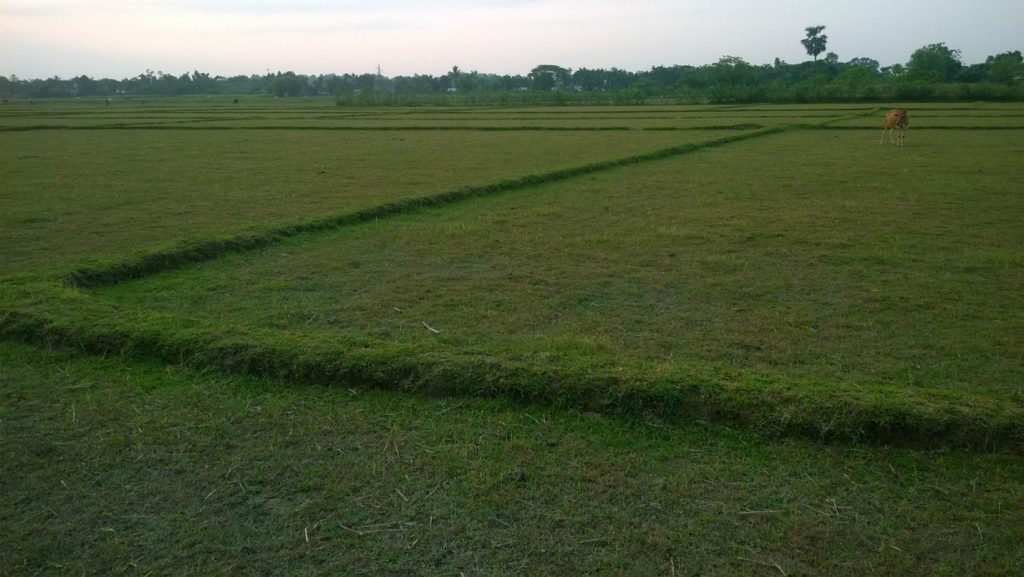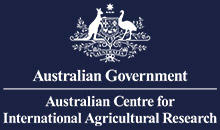Introduction:
Technical, social and economic constraints are limiting the effective use of groundwater and ponds for irrigation in many parts of the EGP. Large areas of land remain fallow during the dry months. Access to year-round water for irrigation would significantly improve the productivity of agriculture, improving incomes and food security.
Marginal and tenant farmers, youth and women are particularly vulnerable and could benefit from a new approach to irrigation provision. This project is researching and demonstrating improved collective farming systems for marginal farmers and improved water management and irrigation practices using efficient systems appropriate to the needs of the marginal farmer communities.
A project funded by the Australian Centre for International Agricultural Research (ACIAR) is working with communities across Nepal (Saptari), India (Cooch Behar and Madhubani) and North West Bangladesh, to research and demonstrate sustainable social and biophysical interventions.
Village:
Uttar Chakowakheti (UC) village is a forest fringe village which is now slowly developing into an agriculture based village though farmers developing knowledge in agricultural practices and irrigation. Farmers are still seeking support from agricultural scientists to develop strategies to repel wild elephants which are destroying their crops. There are just 11 shallow tube wells of 30 feet to 80 feet depth and 10 ponds of 7 feet to 15 feet depth among the 243 households though ponds are not used for any irrigation purpose.
The tribal based Uttar Chakowakheti village of Alipurduar district and land boundary of Coochbehar district is surrounded by the River Kaljani which flows from the mountains toward Bangladesh. The village is also divided in two parts – one habitation at the east embankment and one habitation at the west embankment of Kaljani River. The larger area of the west embankment of Kaljan River was selected as a project location for the DSI4MTF research project. There are around 243 households in the project village with caste composition of 30% Scheduled Caste (SC), 63% Scheduled Tribe (ST), 4% minority and 3% general. The households are mainly dependent on agriculture and other activities including sand mining/lifting, livestock, vegetable business and daily labour etc. for their livelihoods.
Figure 1 – Uncropped land / fallow at Uttar Chakowakheti during dry season (4th June 2016)
Community and interventions:
The Majority of households of Uttar Chakowakheti (UC) belong to schedule tribe (ST) community and were traditionally involved in selling their labour to local tea estates and the forest department. . Despite limited knowledge and skill in agricultural production, some villagers have shifted to agriculture as a means of income production. The average landholding of the households is 1.5 acre which is higher than other farmers living in West Bengal. But still they are facing extreme vulnerability and struggling very hard to manage three meals a day. The DSI4MTF project has been working with the farming community of UC for the past two years selling their labour.
Like Dhaloguri village, initially the farmers were confused about the aims and objectives about this action research project. It has taken time but slowly CDHI has mobilised the farmers through walk around, personnel interview, FGDs, formal and informal meeting / training, exposure etc and still creating ownership towards project. Now the project participants are aware about the project. Farmers are involved in collective actions by forming and strengthening the Collective Farming Group CFG consisting of 8 to 11 members of landless, tenant, marginal, rich and women farmers). Traditionally they were mainly cultivating monsoon paddy, leafy vegetables during rainy and winter season. 90% of the agriculture land at UC remained uncropped during the dry period and 65% during winter. After a series of community engagement programmes and technical interventions including installation of irrigation tube wells, the CFGs are cultivating jute and new crops including chili and other vegetable during this pre-kharif season. The physical interventions through the project started with the installation of one shallow tube well and commissioning of one 4 HP diesel pump at the site. With assured irrigation water the farmers started growing crops even during the dry seasons. After due consideration of soil health and land situation, the project scientists proposed a wide variety of feasible crops to the farmers. They were provided technical trainings and practical demonstrations on different aspects of crop production technologies like sowing/planting, crop management, water management, and disease and pest management.
Figure 2 – New crop cultivation by the collective farming group at Bholaghat, UC.
Impact:
The farmers from different economic background are working together without any conflicts. The rich and tenant farmers are equally contributing their time and labour. They are now slowly getting confidence to work together in the agriculture land for collective actions. The growth of crops is encouraging during this season and actual financial benefit will be calculated after harvesting within one month.
Future:
The project is working on training modules for collective farming system, water management, improve crop management. The project will also be emphasising on empowering the CFGs through manual / guide book of different crops, development of IEC materials, farmers skill development, farmers fair, community research by the farmers, exposure, meeting with market chain participants, linkage building etc. CDHI is also planning to access support from the Department of Science and Technology (DST) through Vivekananda Institute of Technology, West Bengal to promote tuber crops.







